Unveiling Current Insights on Acne Vulgaris and Rosacea
Speaker

Nelva K. Jusuf
Indonesia
Year Education Program 1993 Medical Doctor, Faculty of Medicine Universitas Sumatera Utara 2001 Specialist of Dermatology Venereology and Aesthetic, Faculty of Medicine Universitas Sumatera Utara 2006 Advance Dermatology, National Skin Centre, Singapore 2008 Consultant of Cosmetic and Aesthetic Dermatology, Kolegium Dermatologi dan Venereologi (KDVI)/ Indonesian Collegium of Dermatology and Venereology 2012 Doctorate degree in Medical Sciences, Faculty of Medicine Universitas Sumatera Utara WORK EXPERIENCES YEAR DESCRIPTION 2017 – Now Chief of Dermatology Cosmetic and Aesthetic Division, Departement of Dermatology Cosmetic and Aesthetic, Faculty of Medicine Universitas Sumatera Utara, Universitas Sumatera Utara Hospital Medan, H. Adam Malik General Hospital Medan 2019 – Now Member of the Board of Professors of Universitas Sumatera Utara 2017 – Now Member of the Advisory Council of Faculty of Medicine Universitas Sumatera Utara 2015 – Now Medical Sciences Doctorate Program Lecturer of Faculty of Medicine Universitas Sumatera Utara Medan 1997 – Now Lecturer of Faculty of Medicine USU Medan 2017 – 2021 Head of Department of Dermatology and Venereology, Faculty of Medicine Universitas Sumatera Utara 2017 – 2021 Head of Medical Staff Group of Dermatology and Venereology, Faculty of Medicine Universitas Sumatera Utara, Universitas Sumatera Utara Hospital Medan 2004 - 2007 Secretary of Department of Dermatology and Venereology Faculty of Medicine USU, Medical Functional Staff of RSUP H. Adam Malik ORGANIZATION HISTORY YEAR ORGANIZATIONS AND POSITIONS 2021 - Now Executive Board of Kolegium Dermatologi dan Venereologi Indonesia (KDVI)/ Indonesian Collegium of Dermatology and Venereology 2021 - Now Advisory Council of Ikatan Dokter Indonesia (IDI)/Indonesian Medical Association in North Sumatra Region 2021 – Now Advisory Council of Perhimpunan Kedokteran Wisata Kesehatan Indonesia (PERKEDWI)/ Indonesian Health Tourism Medical Association in North Sumatra Region. 2022 - Now Council of Expert of Perkumpulan Disiplin Herbal Medik Indonesia (PDHMI)/ Indonesian Medical Herbal Discipline Association in Sumatra 2022 - Now Advisory Council of Perhimpunan Dokter Spesialis Kulit dan Kelamin Indonesia (PERDOSKI)/ Indonesian Society of Dermatology and Venereology in Medan 2021 - Now Advisory Council of Kelompok Studi Dermatologi Sosial Indonesia/ Indonesian Social Dermatology Study Group 2017 – Now Head of Medical Education and Training, Ikatan Dokter Indonesia (IDI)/ Indonesian Medical Association in Medan 1998 - Now Member of PERDOSKI Medan Until now Member of IDI Medan Until now Member of Kelompok Studi Dermatologi Kosmetik Indonesia/ Indonesian Cosmetic Dermatology Study Group Until now Member of Kelompok Studi Dermatologi Anak Indonesia/ Indonesian Pediatric Dermatology Study Group Until now Member of Kelompok Studi LASER Indonesia/ Indonesian LASER Study Group Until now Member of Kelompok Studi Geriatri Indonesia/ Indonesian Geriartry Study Group Until Now Member of Kelompok Studi Dermatologi Sosial Indonesia/ Indonesian Social Dermatology Study Group PUBLICATIONS N° PUBLICATIONS 1. Assessing Acne Severity: Teledermatology Versus Face to Face Consultations During the COVID-19 Pandemic. In; J Clin Aesthet Dermatol. 2023;16(1):30-34. https://jcadonline.com/acne-severity-teledermatology-covid-pandemic/ 2. The Relationship of The Use of Mask with The Event of Maskne on USU Hospital Healthcare Workers During The COVID-19 Pandemic. In; Bali Med J, 2023, Volume 12, Number 2, 1171 – 1174. Doi: https://doi.org/10.15562/bmj.v12i2.3967 e-ISSN: 2302-2914 3. Analysis of Risk Factors Associated with Maskne in the Era of the COVID-19 Pandemic. In; Sumatera Medical Journal (SUMEJ)., Vol. 6, N0.1, 2023. Doi: https://doi.org/10.32734/sumej.v6i1.8015 4. Correlation between Sebum Level and Follicular Fluoresence in Acne Vulgaris Patients. In; Open Acces Maced J Med Sci, E-ISSN: 1857-9655. 2022 April 12; 10(B): 1202-1205. E-ISSN: 1857-9655. Doi: https://doi.org/10.3889/oamjms.2022.9445 5. Bacterial sensitivity pattern to antibiotics in acne vulgaris at Universitas Sumatera Utara Hospital Medan, Indonesia in 2019. In; Journal of General Procedural Dermatology and Venereology Indonesia, 2022; 6(1). Doi: http://dx.doi.org/10.19100/jdvi.v6i1.254 6. A Case Report The Evaluation of Malondialdehyde Level on Acne Vulgaris Treatment. In; Sumatera Medical Journal (SUMEJ)., Vol.5, No.2, 2022. Doi: https://doi.org/10.32734/sumej.v5i2.6633 7. Correlation Between Stress Scale and Serum Substance P Level in Acne Vulgaris. In; International Journal of General Medicine, 2021 Mar: (14)681-686, doi: https://doi.org/10.2147/IJGM.S294509 8. Cell Phone Acne: New Acne Clinical Features in the Coronavirus Disease-19 Era. In: Open Acces Maced J Med Sci, E-ISSN: 1857-9655. 2021 Oct; 9(F): 481-485. Doi: https://doi.org/10.3889/oamjms.2021.6872 9. Lower facial skin hydration level increases acne vulgaris severity. In; Bali Med J, 2021 December, Volume 10, Number 3: 1081-1084. Doi: 10.15562/bmj.v10i3.2195 e-issn: 23022914 10. Comparison between the diagnosis of acne vulgaris by teledermatology and face-to-face consultations. In; Bali Med J, 2021 December, Volume 10, Number 3: 1037-1040. Doi: 10.15562/bmj.v10i3.2792 e-issn: 23022914 11. Comparison of brain-derived neurotropic factor (BDNF) serum level in inflammatory and non-inflammatory acne vulgaris. In; Bali Med J, 2021 July Vol 10 (2); 659 – 662. doi: 10.15562/bmj.v10i2.2438 e-issn: 23022914 12. Intense pulsed light (IPL) as adjuvant therapy for acne vulgaris: A case series. In; Journal of General Procedural Dermatology and Venereology Indonesia, 2021; 5(3). Doi: http://dx.doi.org/10.19100/jdvi.v5i3.226 13. Plasma malondialdehyde levels related to acne vulgaris severity. In; Journal of General Procedural Dermatology and Venereology Indonesia, 2021; 5(3). Doi: http://dx.doi.org/10.19100/jdvi.v5i3.262 14. Alternative modality in the treatment of acne vulgaris: Low level laser therapy. In; Journal of General Procedural Dermatology and Venereology Indonesia, 2021; 5(2); 121-129. Doi: http://dx.doi.org/10.19100/jdvi.v5i2.168 15. Antibacterial Activity of Passion Fruit Purple Variant (Passiflora edulis Sims var. edulis) Seeds Extract Against Propionibacterium acnes In: Clinical, Cosmetic, and Investigational Dermatology. 2020; 13: 99-104. Doi: https://doi.org/10.2147/CCID.S229743 16. Passion fruit purple variant (Passiflora edulis Sims var. edulis) seeds extract 10% cream in acne vulgaris treatment: an open-label pilot study. In: International Journal of Dermatology. 2020; 59(12); 1506-12. Doi: https://doi.org/10.1111/ijd.15178 17. The Effect of Forkhead Box Class O1, Mammalian Target of Rapamycin Complex 1, Survivin, and Interleukin-17 on the Degree of Acne Vulgaris Based on Serum Levels. In: Open Access Macedonian Journal of Medical Sciences. 2020; 8(B): 401-407. Doi: https://doi.org/10.3889/oamjms.2020.3522 18. The Association Between Skin Types and Acne Vulgaris. In: Sumatera Medical Journal (SUMEJ). 2020; 3(1): 34-40. Doi: https://doi.org/10.32734/sumej.v3i1.3279 19. The Role of Digital Fluorescence in Acne Vulgaris: Correlation of Ultraviolet Red Fluorescence with the Severity of Acne Vulgaris. In: Dermatology Research and Practice. 2019;1-4. Doi: https://doi.org/10.1155/2019/4702423 20. A Case Series: A Successful of Alternative Modality with Red Light Low Level Laser Therapy for Acne Vulgaris. In Proceedings of the 2nd International Conference on Tropical Medicine and Infectious Disease (ICTROMI).2019; p.402-406. Doi: https://doi.org/10.5220/0009990204020406 21. The Effect of Oral Probiotic on the Interleukin-10 Serum Levels of Acne Vulgaris. In: Open Access Macedonia Journal of Medical Sciences. 2019; 7(19): 3249-52. Doi: https://doi.org/10.3889/oamjms.2019.718 20. Association of Serum Interleukin-10 (IL-10) with the Severity of Acne Vulgaris. In: Bali Medical Journal. 2019; 8(3): 573-6. Doi: https://doi.org/10.15562/bmj.v8i3.1514 21. No Association Between Lipid Profiles and Acne Vulgaris. In: Molecular and Cellular Biomedics. 2018; 2(2): 70-2. Doi: https://doi.org/10.21705/mcbs.v2l2.33 2 Certificate of Merit for Best Contributor of Intellectual Property/PATENTS from Faculty of Medicine USU 3 Republic of Indonesia Presidential Honors Grant Satyalancana Karya Satya XX 4 Scholarship World Congress of Dermatology, Milan, Italy 5 Awardee for the title of Fellow Asian Academy of Dermatology and Venereology (FAADV) 6 Awardee for the title of Fellow of The Indonesia Society of Dermatologyand Venereology (FINSDV) 7 Certificate of Appreciation for Outstanding Lecturer I at Universitas Sumatera Utara 8 Certificate of Appreciation for Outstanding Lecturer I at Faculty of Medicine Universitas Sumatera Utara 9 Republic of Indonesia Presidential Honors Grant Satyalancana Karya Satya X PATENTS AND INTELECTUAL PROPERTIES 1 “Broccoli Flower Extract (Brassica oleracea L. var italica Plenck) Used for Skin Anti-aging by Increasing the Expression of Type 1 mRNAProcolagen”. Patent number : IDP000060866, Status: Granted, Accepted: 23 Maret 2018 signed by: on the behalf of Minister of Law and Human Rights, Director General of Intellectual Property. 2 “Broccoli Flower Extract (Brassica oleracea L. var italica Plenck) Used for Skin Anti-aging by Decreasing the Expression of mRNA and MMP-1”. Patent number: IDP000060865, Status: Granted, Accepted: 23 Maret 2018 signed by: on the behalf of Minister of Law and Human Rights, Director General of Intellectual Property.
Source event
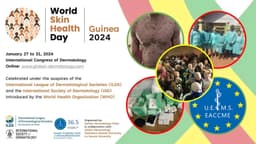
World Skin Health Day | Guinea 2024
Dear Colleagues & Partners,
Welcome to World Skin Health Day | Guinea 2024 !
Let us analyse the positive impact of World Skin Health Day | Guinea 2024 on event day: Access the Event Report.
For its forth edition, the World Skin Health Day is celebrated in Guinea under the auspice of the International League of Dermatological Societies (ILDS) and the International Society of Dermatology (ISD), and introduced by the World Health Organisation (WHO). Expected more than 300+ scientific presentations of Thought-Leaders from 40+ countries covering 22 topics, CME accredited by UEMS-EACCME® for ECMEC®.
Skin disease is one of the most common human illnesses. According to the World Health Organization, over 900 million people are affected by skin diseases around the world at any time. Also, the WHO International Classification of Diseases 11th Revision (ICD-11) includes more than 2,000 skin or skin-related illnesses. World Skin Health Day is a joint project of the International League of Dermatological Societies (ILDS) and the International Society of Dermatology (ISD). Since 2013, World Skin Health Day has been taking place across the world to raise awareness of and treat a diverse range of skin conditions. Taking part in World Skin Health Day helps to raise awareness about the wide-ranging impact of skin disease, as well as supporting people needing treatment in their local communities. To learn more about the campaign, please visit https://www.worldskinday.org
Since 2021, Gamal Abdel Nasser University and Clinique Dermatologique of Conakry conduct World Skin Health Day activities free of charge and open to the public or non-dermatological healthcare workers. In the 2021 edition, more than 500 people from the community of the Loos islands (KASSA) received free skin care with distribution of medicines. Highlighted on ILDS media and ISD Journal (Spring 2021) Vol. 15, No. 1 (p. 19). In the 2022 edition, 277 albinos at John Paul II hospital received free care with treatment of pre-cancerous lesions using trichloroacetic acid and free distribution of sunscreen received from our partner INOYAH. Highlighted on ILDS media and ISD Journal (Fall 2021) Vol. 15, No. 2 (p.15). In the 2023 edition, more than 900 people from the community of Boké perfecture received free skin care with distribution of medicines in September. In 2024, Université La Source and Clinique Dermatologique of Conakry invite you to support to WSHD | Guinea 2024 to raise awareness of and to improve access to dermatological services and treatments for a diverse range of skin conditions in Guinea
From January 27 to 31, 2024, WSHD | Guinea 2024 promises to be enlightening and transformative, featuring an array of themes ranging from cutting-edge diagnostics and therapeutics to the intersection of digital health in dermatology. Together, we will recognize and promote skin health worldwide.
Scientific Committee:
Prof. Brigitte DRENO MD PhD (Chair)
Prof. Jean BOLOGNIA MD (co-Chair)
Prof. Dedee MURRELL MD PhD
Prof. Hassan GALADARI MD
Prof. H. Peter SOYER MD, FACD FAHMS
Prof. Asmahen SOUISSI, MD
Prof. Somesh GUPTA MD
Prof. Nejib DOSS MD
Prof. Fahafahantsoa RAPELANORO RABENJA, MD
Prof. Monika FIDA MD
Prof. Franco RONGIOLETTI MD
Prof. Samira ZOBIRI MD
Prof. Aldo MORRONE
Prof. Giovanni DAMIANI, MD, PhD
Prof.George KROUMPOUZOS,MD,PhD
Dr. Nazim Khaled BENMEHIDI
Prof. Amor KHACHEMOUNE MD, PhD
Prof. Enas ATTIA MD
Prof. Mohsin AL-DHALIMI MD
Prof. Hamida TURKI MD
Prof. Dominique TENNSTEDT MD
Dr. Mathilde IORIZZO, MD, PhD, FMH
Prof. Mohammad JAFFERANY MD, PhD
Prof. Aimilios LALLAS MD, MSc, PhD
Prof.Georgi TCHERNEV,MD,PhD
Prof. Esther FREEMAN MD PhD
Join us in making a difference and explore our diverse themes:
Theme 1 : Acne and Rosacea : Diagnostics and therapeutics / Acné et Rosacea : Diagnostic et thérapeutique
Chair : Pr Brigitte DRENO MD PhD (France)
Theme 2 : Atopic Dermatitis and allergology / Dermatite atopique et allergologie
Chair : Pr Alain Taieb MD (France) ; Pr Kiran V. Godse MD, PhD (Glasg.)
Theme 3 : Psoriasis : Diagnosis and therapeutic / Psoriasis : Diagnostic et thérapeutique
Chair : Pr Giovanni Damiani MD, PhD
Theme 4 : Pigmentation diagnostics and therapeutics / Diagnostic et thérapeutique de la pigmentation
Chairs : Pr Firas AL-NIAIMI MD; Pr. Rashmi SARKAR MD, FAMS, IFAAD
Theme 5 : Cosmetic Dermatology / Dermatologie Cosmétique
Chairs : Pr. George KROUMPOUZOS MD, PhD, FAAD; Prof. Robert A. Schwartz MD, MPH, DSc (Hon), FRCP Edin (USA)
Theme 6 : Dermatosurgery / Dermato – Chirurgie
Chairs : Pr Amor KHACHEMOUNE MD PhD FAHMS; Pr H. Peter SOYER MD, FACD; Dr. Khaled TURKI MD
Theme 7 : Hair disorders / Troubles capillaires
Chairs : Dr. Sergio Vano-Galvan, MD, PhD; Dr Maria-Angeliki GKINI, MD, MSc, PhD; Pr Asmahen Souissi MD
Theme 8 : Nail disorders / Troubles des ongles
Chair : Pr Chander Grover MD
Theme 9 : Pediatric Dermatology / Dermatologie pédiatrique
Chairs : Pr Dominique TENNSTEDT MD; Pr Hamida TURKI MD
Theme 10 : Psychodermatology / Psychodermatologie
Chair : Pr. Mohammad JAFFERANY MD, PhD
Theme 11 : Sexually transmitted diseases and dermatology in the genital area / Maladies sexuellement transmissibles et dermatologie dans la région génitale
Chairs : Dr Antoine BERTOLOTTI MD, PhD; Dr Sandra LY MD
Theme 12 : Medical dermatology / Dermatologie médicale
Chairs : Pr Jean BOLOGNIA MD; Pr Michel Gillet MD PhD; Pr Néjib DOSS MD; Pr Monika FIDA MD
Theme 13 : Dermoscopy / Dermoscopie
Chair : Pr. Aimilios LALLAS MD MSc; Pr. John PAOLI MD; Dr Michela Vita Rita Starace MD PhD; Dr Nazim BENMEHIDI MD
Theme 14 : Virtual exhibition / Exposition virtuelle
Chair : Pr Kelati AWATEF MD
Theme 15 : Skin NTDs
Chairs : Prof. Rapelanoro Rabenja Fahafahantsoa MD; Pr. Mokni Mourad MD; Dr. Ruiz Postigo José Antonio
Theme 16 : Discussion session / Session discussion
WHO Perspectives – OpenWHO and medical education – GLODERM Mentorship
Panelists : José-Antonio Ruiz-Postigo; Kari Wanat; Esther FREEMAN
Theme 17 : ISD Mentorship Program
Panelists : Nellie Konnikov; Leopoldo Santos; Martin Kassir
Theme 18 : GLODERM Mentees
Chairs : Kari Wanat; Esther FREEMAN
Theme 19 : Residents symposium
Chair : Pr Siham Dikhaye MD
Theme 20 : Vesiculobullous diseases + Others – Maladies vésiculo-bulleuses + Autres
Chair : Pr. Dedee MURRELL MD PhD DSc
Thank you for your invaluable support in advancing skin health on a global scale. Together, we can inspire change and transform lives.
Dr Ibrahima TRAORE, Organizer, WSHD | Guinea 2024
Description
Acne vulgaris and rosacea are two chronic inflammatory skin conditions that primarily affect the facial area. Both may cause significant psychological problems and reduce patient’s quality of life. Acne vulgaris has multifactorial etiopathogenesis so that the treatment should be done by holistic approach. New formulations derived from herbal ingredients for acne treatment are especially targeting the inflammatory cascade, antimicrobial effect, and reduce sebum production. Encouraging the use of dermocosmetic in synergy with pharmacological regiment should support improved acne treatment adherence in better clinical outcomes. Rosacea has complex pathogenesis but that is not fully understood, involves dysfunction of immune system, dysregulation of neurovascular, presence of microorganism and environmental factors. The care of rosacea skin is a challenge for dermatologists. It features may be reduced or controlled with a range of pharmacological and procedural therapies as well as skin care and lifestyle management. Combination therapy is often necessary for effective treatment. Keywords: acne vulgaris, dermocosmetics, herbal therapy, rosacea
Similar videos
Source event Program
Welcome speech
Fodé Mohamed PhD
Introduction

Introduction to the René Touraine Foundation
Session 1 : Acne and Rosacea : Diagnostics and therapeutics / Acné et Rosacea : Diagnostics et Thérapeutiques
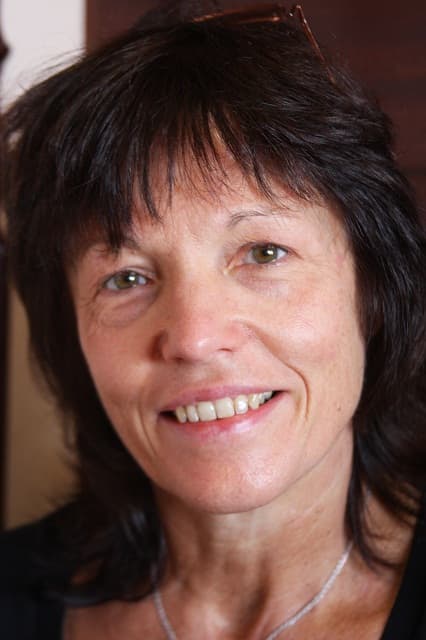
Le microbiome cutanée : Gardien de la bonne santé de notre peau / The skin microbiome: Guardian of the good health of our skin
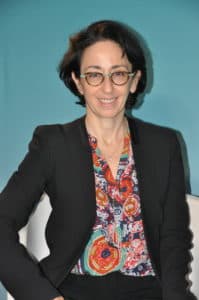
International expert consensus recommendations for use of dermo- cosmetics in acne
Delphine KEROB
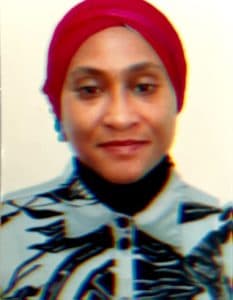
Acné et qualité de vie des adolescents à peau pigmentée en milieu scolaire à Abidjan, Côte d'Ivoire (Afrique subsaharienne) / Acne and quality of life in adolescents with pigmented skin in a school environment in Abidjan, Ivory Coast (Sub- Saharan Africa)

Long-term treatment for acne
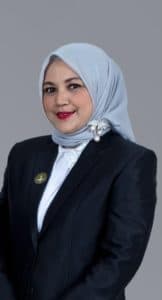
Unveiling Current Insights on Acne Vulgaris and Rosacea
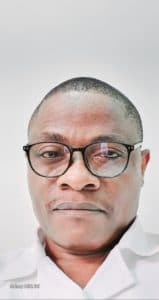
Epidemiological and clinical profile of acne in Kinshasa / Profil épidémiologique et clinique de l’ acné a Kinshasa
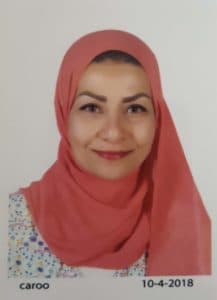
Advances in rosacea what is the current state of art

Rosacea in skin of color

DISCUSSIONS - ACNE AND ROSACEA
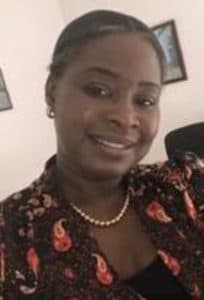
Symposium PIERRE FABRE : Acne Management with Keracnyl PP+ / Prise en Charge de l’Acné avec Keracnyl PP+ (CME-)
Session 2 : Atopic Dermatitis and allergology / Dermatite atopique et allergologie
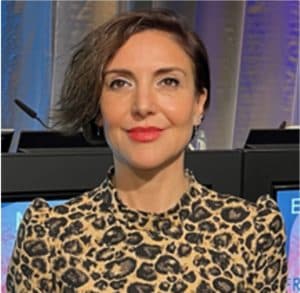
Mises à jour sur l'urticaire chronique / Updates in Chronic Urticaria

Dermatite atopique en Afrique subsaharienne: défi pour mettre en place la recherche / Atopic dermatitis in sub-Saharan Africa: challenge for implementing research

Adult atopic dermatitis: clinical presentation

Comorbidités de la dermatite atopique / Comorbidities of atopic dermatitis

Antihistamine resistant urticaria

Cours OpenWHO sur la dermatite atopique destiné aux agents de soins de santé primaires en Afrique subsaharienne : qu'est-ce quiOpenWHO course on atopic dermatitis for primary health care workers in Sub- Saharan Africa: what matters most in this setting?”
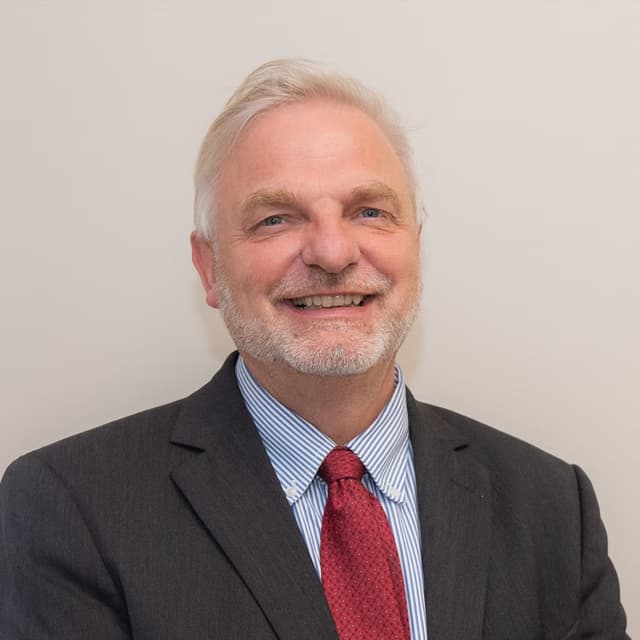
Pathophysiology and New Therapies in Atopic Dermatitis
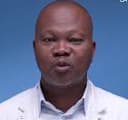
Education thérapeutique dans la Dermatite atopique / Therapeutical education in Atopic dermatitis
Célestin Ahogo MD
Session 3 : Psoriasis : Diagnosis and therapeutic / Psoriasis : Diagnostic et thérapeutique
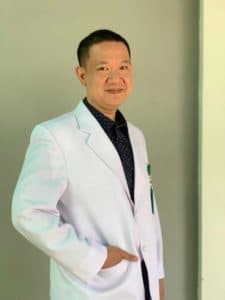
Répondre aux besoins non satisfaits des patients psoriasiques dans les pays en développement / Addressing the unmet needs of psoriatic patients in developing countries

Traitement du psoriasis chez les patients atteints d'infections chroniques / Treatment of psoriasis in patients with chronic infections

Dilemme diagnostique du psoriasis sur peau de couleur / Diagnostic dilemma of psoriasis in skin of color

Le psoriasis du cuir chevelu comme indicateur du rhumatisme psoriasique / Scalp psoriasis as an indicator of psoriatic arthritis

Améliorer l’observance des traitements contre le psoriasis / Improving compliance with psoriasis treatments
Steven R. Feldman MD, PhD,

Traiter le psoriasis dans des populations particulières : quelles sont les preuves / Treating Psoriasis in Special Populations: What’s the evidence
Giovanni Damiani MD, PhD

Psoriasis et comorbidités : une approche multidisciplinaire / Psoriasis and comorbidities: a multidisciplinary approach

DISCUSSIONS (session 3)
Steven R. Feldman MD, PhD,
Session 4 : Pigmentation diagnostics and therapeutics / Diagnostic et thérapeutique de la pigmentation
Prof. Bolognia Jean ; Prof. Sarkar Rashmi

Managing Hyperpigmentation : Treatment Approaches for Asian Skin
Tatyana Vinnik

Salt & Pepper dyspigmentation: diagnostic and severity marker of Systemic Sclerosis in patients of African descent. Case presentations and discussion
Jeannette Aryee-Boi

Vitiligo : Diagnosis, Treatment & Care
Maimuna Stores MD

Oral tranexamic acid in melasma

Disorders of hypopigmentation : A practical Approach
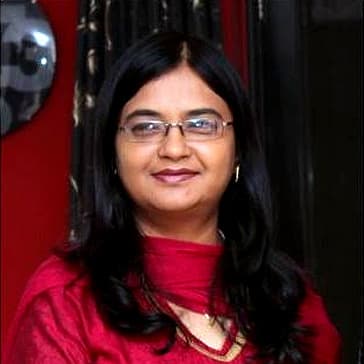
Update on topical and systemic therapies on melasma including tranexamic acid

DISCUSSIONS (session 4)
Might interest you
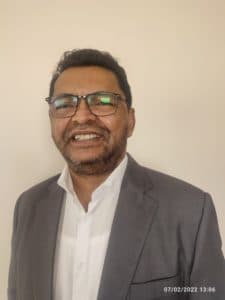
Cutaneous Medicine: Multidisciplinary Approaches in Dermatology
Chair: Prof. Fahafahantsoa Rapelanoro Rabenja,
This course explores the intersection of dermatology with other medical specialties, emphasizing a collaborative approach to diagnosing and managing complex skin disorders. It covers a wide range of topics, including dermatopathology, rheumatology, oncology, and infectious diseases, highlighting how systemic conditions manifest cutaneously. With contributions from experts in various fields, the text provides comprehensive insights into multidisciplinary care, advanced diagnostic techniques, and innovative treatments. Ideal for dermatologists, internists, and specialists, it bridges gaps between disciplines to improve patient outcomes in cutaneous medicine.
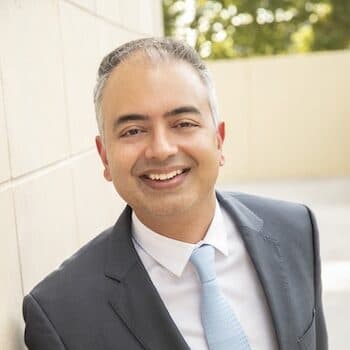
Pigmentation
Chair: Dr Seemal Desai, MD, FAAD
Hyperpigmentation is excess skin color from melanin. Understand melanin synthesis mechanisms and main causes.
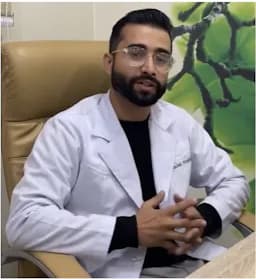
Neglected Tropical Skin Diseases
Chair: Dr. Prajwal Pudasaini, MD
Neglected tropical skin diseases affect poor populations in tropical areas. They include leprosy, mycetoma, and cutaneous leishmaniasis, causing disability and stigma. They receive little attention and resources, leading to poor diagnosis and treatment. Increased awareness and improved healthcare access are needed to help affected communities.

Acne Treatment in China
Chair: Prof. Haiping Zhang, PhD
Acne treatment in China combines traditional methods with modern practices.
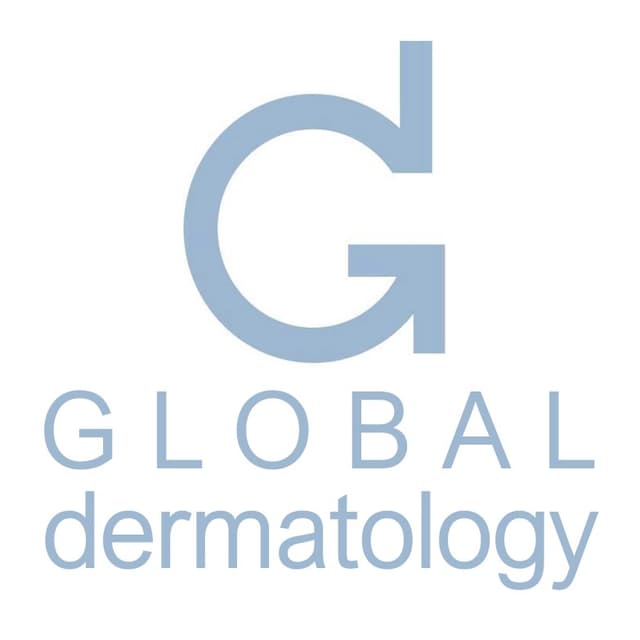
Cyspera Medical Education
Chair: Global Dermatology,
Cyspera® is a topical pigment-correcting treatment formulated with cysteamine, a naturally occurring compound that reduces the appearance of persistent hyperpigmentation, including melasma, post-inflammatory hyperpigmentation, and lentigines. It is known for being non-hydroquinone, suitable for long-term use, and effective on all skin types.
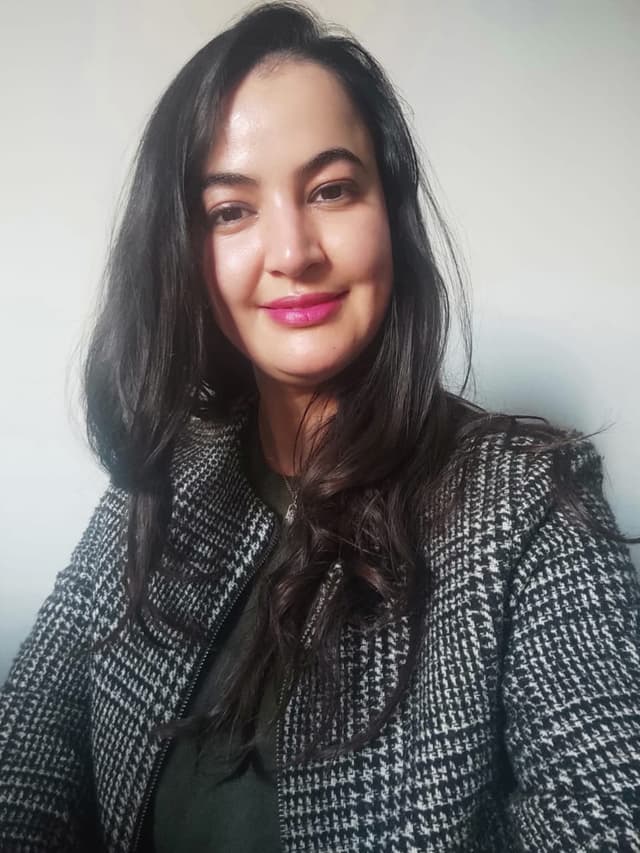
Topographic Dermoscopy
Chair: Prof. Awatef Kelati, MD
Topographic dermoscopy refers to the region-specific application of dermoscopic examination, emphasizing the unique morphological patterns found across different anatomical sites. On facial skin, the dermoscopic assessment requires recognizing patterns influenced by the high density of pilosebaceous units and sun-induced changes, often presenting pseudonetworks and annular-granular structures. The ear, with its thin skin and sebaceous gland concentration, reveals specific vascular and follicular clues important in distinguishing benign from malignant lesions.
On the chest and back, where the skin is thicker and sun exposure varies, dermoscopy must account for irregular pigment distribution and architectural disorder, especially in large nevi or early melanomas. Limb lesions may show distinctive features due to mechanical friction, hair density, and vascular variations, demanding precise interpretation to identify atypical nevi or skin cancers.
Palmar and plantar dermoscopy highlights the parallel ridge pattern critical for melanoma diagnosis, contrasting with benign acral patterns like the parallel furrow or lattice-like structures. Scalp and hair disorders benefit from trichoscopy, where dermoscopic evaluation reveals specific signs such as yellow dots, broken hairs, or black dots, aiding in the diagnosis of alopecia areata, androgenetic alopecia, or tinea capitis.
In nail disorders, onychoscopy enables visualization of melanonychia, hemorrhages, and nail matrix changes, crucial for distinguishing subungual melanoma from benign causes like trauma or fungal infection. Mucosal dermoscopy, though technically challenging, provides diagnostic clues in pigmented lesions of the lips, genitalia, or oral mucosa, requiring adaptation to moist, non-keratinized surfaces.
Finally, ultraviolet dermoscopy reveals a unique application: scabies mites fluorescing bright green under UV light, enhancing detection when traditional visualization fails. Topographic dermoscopy thus demands both anatomical knowledge and technical adaptation to maximize diagnostic accuracy across diverse body sites.
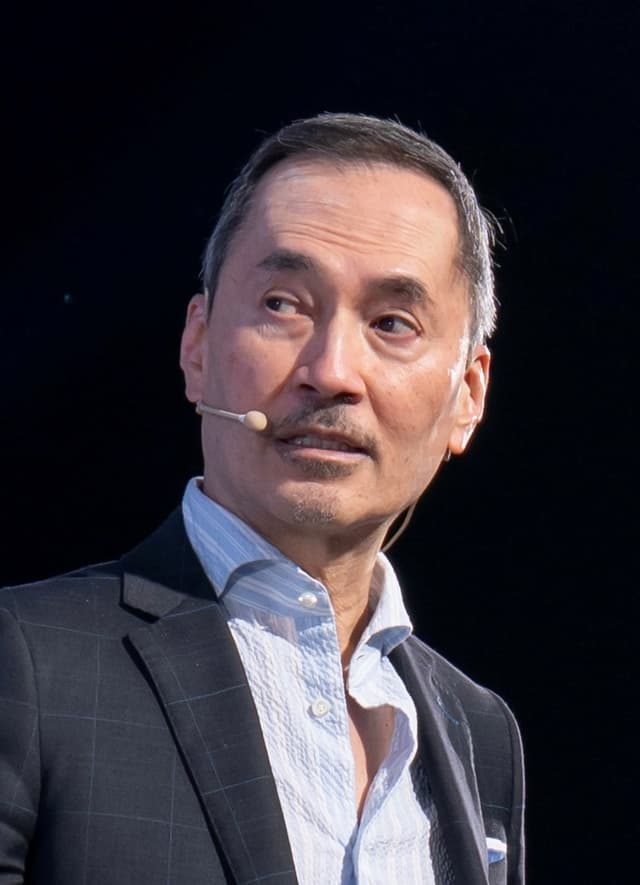
ACNE
Chair: Dr. Jerry Tan, MD
The ACNE | Education Series, led by Dr. Jerry Tan, is a comprehensive global medical education initiative designed to enhance the understanding and skills of dermatologists and healthcare practitioners regarding acne. Participants will gain insights from leading international experts on the latest advancements in acne research, innovative treatment options, and patient-centered care approaches. The event features interactive discussions, live Q&A sessions, and evidence-based strategies, all at no cost. The esteemed faculty includes specialists from the USA, Italy, France, the UK, Singapore, Greece, Australia, Canada, and Germany. This is a valuable opportunity to improve clinical competencies and stay updated on current acne management practices.
Attendees will acquire up-to-date knowledge on acne pathophysiology, new therapeutic options, and patient-oriented management strategies to optimize clinical outcomes in acne treatment. The session will also provide practical insights through expert-led discussions and evidence-based approaches.
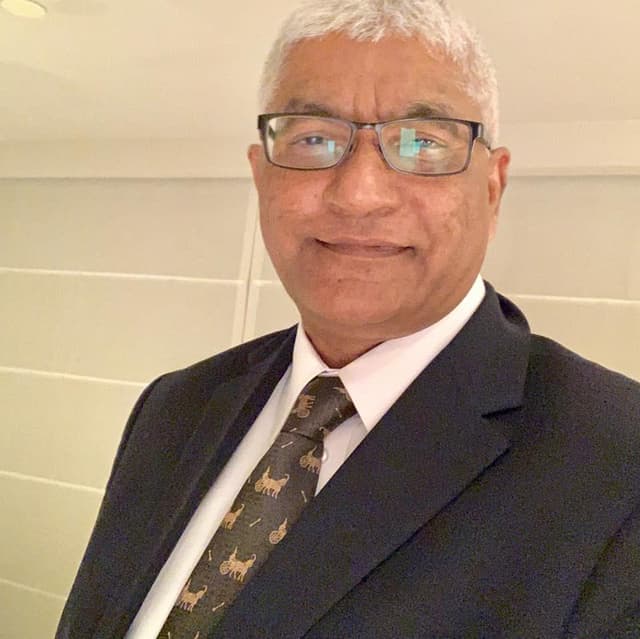
Psychodermatology
Chair: Prof Mohammad Jafferany, MD
This specialized course explores the vital intersection between dermatology and mental health, equipping clinicians with the knowledge and tools to manage psychodermatological conditions effectively. Through a blend of theoretical knowledge and practical application, participants will learn to diagnose and treat dermatological delusional disorders, identify psychiatric comorbidities in skin disease patients, and implement mental health strategies for chronic dermatoses. The curriculum also examines psychological factors in cosmetic dermatology and provides cutting-edge screening techniques for body dysmorphic disorder, including modern digital manifestations like Zoom dysmorphia. Adopting a patient-centered approach, the course emphasizes multidisciplinary management of conditions where psychological and dermatological factors interact. Participants will gain expertise in recognizing psychiatric components of skin diseases, addressing the emotional
burden of chronic conditions, and applying ethical principles in cosmetic practice. The training combines expert instruction with case-based learning to bridge theory and clinical practice. Designed for dermatologists, psychiatrists, psychologists, and primary care providers, this program enhances clinicians' ability to deliver holistic care that addresses both the visible and invisible aspects of skin disorders. Upon completion, practitioners will be better prepared to manage complex psychodermatological cases while improving patient outcomes through integrated mind-skin healthcare.

Tropical Dermatology and Neglected Tropical Dermatoses
Chair: Prof. Fahafahantsoa Rapelanoro Rabenja,
Dermatological diseases, particularly neglected tropical diseases (NTDs) with skin manifestations like deep mycosis (chromoblastomycosis, sporotrichosis, mycetoma), scabies, leprosy, lymphatic filariasis, and cutaneous leishmaniasis, pose major challenges for healthcare systems in resource-limited regions of Africa, Asia, and Latin America. These conditions severely affect vulnerable populations, suffering from frequent underdiagnosis and inadequate treatment that exacerbates suffering. Diseases such as atopic dermatitis are also under consideration for inclusion as skin NTDs through collaborative efforts involving ISAD, ASDV, and WHO. Furthermore, albinism, highly prevalent in sub-Saharan Africa, presents significant social challenges including stigmatization and occult beliefs. Despite these complex difficulties, the field is undergoing a historic transformation driven by science and technology, particularly artificial intelligence (AI), which offers tangible tools for improving diagnosis, treatment, and prevention. The participation of global experts facilitates vital knowledge exchange, exploration of innovative solutions, and helps address critical shortages of human and material resources in remote areas.
Learning Objective:
Understand the complex challenges posed by dermatological diseases, especially skin NTDs and conditions like albinism, in resource-limited settings, and recognize the critical role of global collaboration, technological innovation (particularly AI), and expert knowledge exchange in developing solutions to improve diagnosis, treatment, prevention, and resource allocation.

Dermoscopy
Chair: Prof Awatef Kelati, MD
This comprehensive dermoscopy course provides dermatologists and healthcare professionals with essential skills in skin lesion evaluation, covering fundamental principles through advanced diagnostic applications across five key areas: global dermoscopy practices, pigmented lesion analysis (including differentiation of benign and malignant patterns), specialized techniques for skin of color, skin cancer detection (melanoma and non-melanoma), and general dermatological conditions (inflammatory, infectious, and hair/nail disorders). Participants will develop proficiency in recognizing diagnostic patterns, adapting techniques for diverse skin types, and applying dermoscopic algorithms, ultimately enhancing their clinical accuracy through a combination of theoretical knowledge and practical case-based learning. The course emphasizes real-world application, addressing both common and challenging scenarios in dermatological practice.
